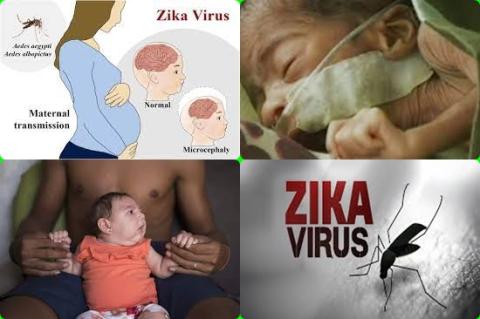
Objectives:
The occurrence of fetal and neonatal disorders in pregnant women with Zika virus infection in the literature is not consistent. Therefore, this review article has been conducted.
What is the prevalence rate of disorders in fetuses/neonates of pregnant women with confirmed or probable Zika virus infection?
Study design:
This review article included 21 cohort studies with a total of 35,568 pregnant women.
Results and conclusions:
The investigators found the meta-analysis showed that central nervous system abnormalities had the highest prevalence ratio of 0.06 [95% CI = 0.03 to 0.09].
The investigators found the meta-analysis showed that intracranial calcifications had a prevalence ratio of 0.01 [95% CI = 0.01 to 0.02] and ventriculomegaly 0.01 [95% CI = 0.01 to 0.02].
The investigators found the meta-analysis showed that the prevalence ratio of microcephaly was 0.03 [95% CI = 0.02 to 0.05], fetal loss (miscarriage and stillbirth) was 0.04 [95% CI = 0.02 to 0.06], small for gestational age was 0.04 [95% CI = 0.00 to 0.09], low birth weight was 0.05 [95% CI = 0.03 to 0.08] and prematurity was 0.07 [95% CI = 0.04 to 0.10].
The investigators found the meta-analysis showed that the positivity in RT-PCR for ZIKV performed in neonates born to infected mothers during pregnancy was 0.25 [95% CI = 0.06 to 0.44].
The investigators found the meta-analysis of meta-analysis for microcephaly with the prevalence ratios from other two previously systematic reviews was 0.03 [95% CI = 0.00 to 0.25].
The investigators concluded that the disorders in foetuses and neonates of pregnant women with probable or confirmed Zika virus infection are microcephaly, CNS congenital abnormalities, intracranial calcifications, ventriculomegaly, fetal loss, small for gestational age, low birth weight and prematurity. The continuous knowledge of this magnitude is essential for the implementation development of health initiatives and programs, in addition to promoting disease prevention, especially in the development of a vaccine for Zika virus.
Original title:
Fetal, neonatal, and infant outcomes associated with maternal Zika virus infection during pregnancy: A systematic review and meta-analysis by Martins MM. Alves da Cunha AJL, […], de Andrade Medronho R.
Link:
https://journals.plos.org/plosone/article?id=10.1371/journal.pone.0246643
Additional information of El Mondo:
Find more information/studies on pregnancy and food fortification/malnutrition right here.
CNS congenital anomalies are birth defects of the physical structure of the brain or spinal cord that develop in utero or when a foetus is developing during pregnancy.
Ventriculomegaly is a condition in which the ventricles appear larger than normal on a prenatal ultrasound. The ventricles of the brain are a communicating network of cavities filled with cerebrospinal fluid (CSF) and located within the brain parenchyma.
Microcephaly is a condition where a baby's head is much smaller than expected.
Intracranial calcifications refer to calcifications (small deposits of calcium) within the brain parenchyma or vasculature.